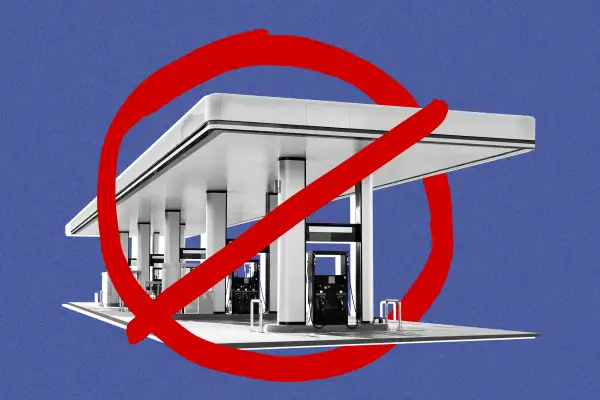Would a Gas Boycott Actually Lower Prices at the Pump?

Americans are now routinely paying over $5 gallon for gas around the country — and some people are calling for boycotts to try to drive prices down.
Earlier this week, a viral TikTok post claiming that a three-day boycott in 2008 helped bring prices down racked up 1.7 million views in three days. “Rumors about a gas boycott in July for a couple of days,” one Twitter user wrote this week. “Y’all think this will get them to drop prices? Might actually work.”
This isn’t a new phenomenon. A widely-shared Facebook post from March claimed that a nationwide “gas out” protest in April 1997 brought prices down by 30 cents overnight.
In fact, these types of messages have been popping up online regularly for two decades, Snopes found.
Unfortunately for frustrated drivers, the claims are usually too good to be true. It's not clear if American consumers engaged in any widespread gas boycott in the past. And fact-checking sites like Snopes say there's no evidence that gas prices dropped significantly after the days when people were supposed to be boycotting fill-ups.
Do gas boycotts work?
“I've never seen a gas boycott result in anything,” Patrick De Haan, head of petroleum analysis at GasBuddy, told Money.
De Haan says that’s because boycotts don’t actually reduce demand for gas. Participants still fill up — just a day or two earlier or later than they would have done anyway.
“Simply shifting demand one day before or after the boycott doesn't reduce demand enough to make any difference,” he said. According to De Haan, it would take a sustained reduction in gas consumption — over a period of weeks, not merely days — to reduce demand enough to have an impact on prices.
Other experts share that opinion: "A one-day event is likely to have a limited impact since longer-term trends could still cause prices to continue moving along that set direction,” AAA spokesperson Devin Gladden told PolitiFact, which has debunked the claims in the viral messages.
Right now, those longer-term trends include the ongoing conflict in Ukraine and reduced capacity at refineries across the globe (a holdover from the early days of the pandemic) — both of which are driving up the price of crude oil. Until the price of oil falls, gas prices aren’t likely to drop much.
For now, high prices aren’t keeping American drivers away from the pump — despite online chatter about a boycott.
“Based on the demand we’re seeing, it seems high prices have not really deterred drivers,” Andrew Gross, AAA spokesperson, said in a blog post Monday.
“If prices stay at or above $5, we may see people start to change their daily driving habits or lifestyle,” he said, “but it hasn’t happened yet.”
More from Money:
5 Facts That Show How Painful Gas Prices Are Now
